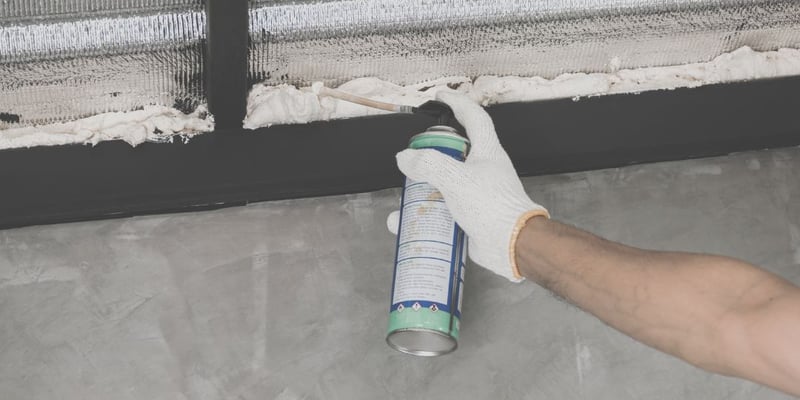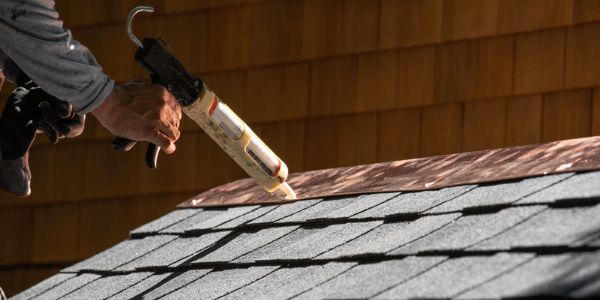- Home »
- Learningcenter »
- What are the top 3 sealants for roof repairs
What Are The Top 3 Sealants For Roof Repairs?

When it comes to roof repair, sealants are one of the most important tools in your arsenal. Not only do they protect against leaks and water damage, but they can also extend the life of your roof by preventing further deterioration. But with so many options on the market, how do you know which sealant is right for your roof repair project? Keep reading to find out more about what makes a good roof sealant, and what our picks are for the top 3.
What Makes A Good Roof Sealant?
When looking at the characteristics of a good roof sealant, there are a few main points to consider. First and foremost is water resistance, followed by how long they last, how easy they are to apply, and how well they reflect UV rays.
Water Resistance
Water resistance is an essential component when evaluating a good roof sealant. Without it, the material can be easily damaged by water seepage and infiltration, leading to costly repair bills and even further damage down the line. Roof sealants with good water resistance create a barrier between your roof and the environment, preventing moisture from entering and damaging the substrate beneath
Durability
Durability is an important aspect to consider when choosing a good roof sealant. Some sealants (particularly inexpensive ones) are more prone to chipping or cracking over time, especially in the face of harsh conditions. High quality sealants are designed to stand up to extreme temperatures and weather conditions. Highly durable sealants can ensure that your roof is protected even under heavy rain and snowfall, preventing further leaks and damage.
Ease Of Application
Fortunately, the vast majority of roofing sealants are pretty easy to apply. There are four main application methods, which will depend on the type of sealant you choose. These four are tape sealants, paint can, spray can, and caulk tubes.
Tape sealants are peel and stick, which makes them very straightforward, but they can be tricky in areas that aren't flat. With sealants that come in a paint can, you can cover a large area and control the thickness of the sealant, but they can be messy. Spray cans and caulk tubes are simple and easy to apply, but they don't come with a lot of product, so they are best for small areas.
The most important thing to remember with any sealant, is that in order to ensure a successful application with minimal issues, it's imperative that you read and follow the manufacturers instructions.
UV Reflectiveness
Roofs are constantly exposed to the elements, and one of the most damaging is UV rays.
UV rays can cause roofing materials to deteriorate and break down over time, leading to leaks and water damage. In order to protect your roof and extend its life, it's important to choose a roof sealant that has good UV reflectiveness.
The best way to protect your roof from UV exposure is to choose roofing materials with good UV reflectivity. This will help shield your roof against sunlight and the damage it can cause.

The Top 3 Roof Sealants
To give you the top 3 roof sealants, we'll be ranking by material. Material plays a huge role in the quality of a sealant, so it makes sense to break it down this way - following each ranking, we'll also give a few examples of sealants that fall under that category.
#1 - Silicone Roof Sealants
Coming in at the top of the list is silicone roof sealants. Silicone roof sealants are the best all around roof sealants, as they provide both good water resistance and good UV reflectivity. Silicone is waterproof, and it reflects up to 90% of UV rays. Silicone is also incredibly long lasting. The downside to silicone as a roof sealant is usually going to be found in the price - because it performs so well and lasts for a long time, silicone sealants come with a higher price tag.
Examples of Silicone Roof Sealants:
#2 - Acrylic Roof Sealants
Next on the list we have acrylic roof sealants. Acrylic is another great option for roof sealants, because it's especially good at reflecting UV rays. It's also long lasting, not quite as long as silicone, but long lasting nonetheless. It's not as water resistant as silicone however, and prolonged standing water will deteriorate acrylic roof sealants much more quickly. From a cost vs performance standpoint though, acrylic is one of the best sealant options.
Examples of Acrylic Roof Sealants:
#3 - Polyurethane Roof Sealants
Polyurethane comes in at third on our list of the best roof sealants. Polyurethane sealants don't have as much resistance to UV rays as acrylic sealants, but they have amazing water resistance. This makes polyurethane sealants are especially great for use in areas with high levels of rain and snow. Similarly to acrylic, they also have a good cost vs performance rating.
Examples of Polyurethane Roof Sealants:
Have Questions About Roof Sealants?
If you're in need of roof repairs, or if you have questions about roof sealants or the best materials for your area - call Colony Roofers today! We have a team of dedicated professionals standing by to answer your questions, and we're always eager to help. We also offer free 30 minute inspections, where one of our team members will come out and take a look at your property, and offer insight and advice about any specific issues you may have.
 Call (678) 365-3138
Call (678) 365-3138

